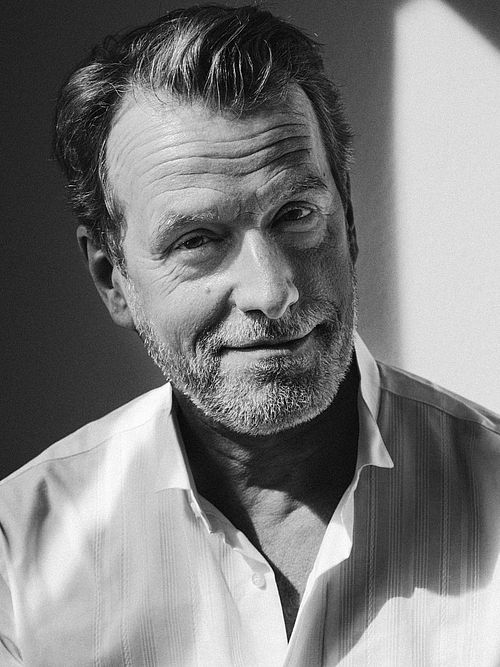Present | September 13, 2023
The Vienna State Ballet will perform Rudolf Nureyev from September 14, 2023 Don Quixote – To music by Ludwig Minkus. To this day, the Vienna-born artist remains in the shadow of other composers, although his work in dance is of exceptional quality. Dramaturg Anne de Paco spoke with conductor Robert Reimer, who can be seen on the Vienna State Opera Orchestra stage in all performances of the production.
Music created specifically for ballet is often measured against the standards of symphonic or operatic music, which usually does not do these compositions justice. This is still felt today by Ludwig Minkus, who was born in Vienna in 1826, and the only ballet music he knows – and only a few of these are from large-scale oeuvre: Don Quixote, La Bayadere and his additions to Paquita. How would you describe Minkus’ music?
Robert Reimer Ludwig Minkus was a composer who knew how to give choreographers exactly what they needed in their ballets. But that doesn’t mean he wrote bad music. It was no coincidence that he became famous after his first collaboration with Marius Petipa – which was staged at the Bolshoi Theater in Moscow in 1869. Don Quixote -He became resident composer of the Russian Imperial Ballet. The score is very precise and contains many wonderful, expressive melodies and very powerful musical dramatic passages. Unlike Léo Delibes and of course Pyotr Ilyich Tchaikovsky or Igor Stravinsky, no suites designed by Minkus became at home in the concert hall, which certainly contributed to the fact that his works are hardly known. I can explain this only by the fact that he wrote only ballet compositions.
Don Quixote, composed six years before Georges Bizet’s Carmen, is a so-called “Spanish” ballet and thus fits into the fascination with everything “foreign” and “strange” that was prevalent in the arts in the second half of the nineteenth century. Vogue magazine.
RR Like Bizet, Minkus took inspiration for his score from the melodies and dances of Spanish folk songs – and how he combined them was accomplished not only brilliantly, but with a surprising wink. His music perfectly hits the comedic timbre that matches the music of Cervantes Don QuixoteLibretto based on the novel. Basically, with Minkus, it’s very important that you hit the right pace. A good example of this is the scene in the World of Shadows No bayadere It was composed in 1877, the same year that Tchaikovsky composed it Swan Lake: In 12/8 time, every eighth note has a weight, so you have to choose a very slow tempo, only then will the music reveal its full quality and it soon becomes clear that Minkus is a truly underrated composer.
Not only do the dances in Don Quixote have a wonderful quality due to their characteristics, but also the action scenes. Like the later film music “Micky Mousing”, it is composed specifically for pantomime, gestures, looks and steps.
RR This is something I experienced for the first time in my career with such precision in preparing Kurt-Heinz Stolze’s score for John Krankus Onegin Confrontation. But it does apply to Minkus Don Quixote: That dance music not only conveys emotions and provides rhythms and rhythms, but also makes every note meaningful to the theater in the musical-dramatic sense that understands the art of ballet as a language, such that one has the impression that the action or movement arises from this is the music. Minkus has mastered this brilliantly – and it’s important to convey that over and over again when working with musicians, who – and I’m not kidding myself – approach a Minkus production differently than a Tchaikovsky production at desks. But once you discover how beautiful the music is in these sheet music, you will start to enjoy playing it.
Rudolf Nureyev’s Don Quixote was arranged by the English conductor John Launchbury, who had primarily arranged scores for the Royal London Ballet – including Frederick Ashton’s La fille mal gardée.
RR Minkus’s sources are unfortunately fundamentally problematic. Original score too No bayadere For example, it was found only in the archives of the Mariinsky Ballet in 2002. Just in case Don Quixote I don’t know if the “original” still exists – following it up would certainly be a complex but potentially worthwhile research project. Just as Petipa’s choreography has only survived through the numerous rewrites the work has undergone over time, the score has also been repeatedly revised, shortened and supplemented. I have Don Quixote It has so far only been performed in adaptations – including Victor Olati’s version at the Berlin State Ballet, where the Spanish color is made more pronounced by the incorporation of a flamenco guitarist, which, frankly, has proven somewhat problematic in terms of performance practice.
How should you imagine your preparations for a ballet production?
RR is in current state Don QuixoteSeries by Vienna State Ballet I’m lucky to have another big Minkus project this year: Just Me No bayadere It was made with the Hong Kong Ballet and the Hong Kong Sinfonietta – in the version created by Vladimir Malakhov for the Vienna Opera Ballet in 1999. Malakhov was also on location in Hong Kong and we had extensive rehearsals with the dancers and orchestra – the perfect foundation for me in working with Minkus Don Quixote In Vienna. For repertory works, videos are an important foundation for my preparation. I study the choreography with them carefully, working from the big to the small: I first sort out all the transitions, entrances and exits, and notice the places where I should wait for the dancers and those where I am freer. Then I delve deeper into the choreography, looking more closely at how the movements fit with the music. For a dancer, rhythm is always crucial – and in order to find that, you have to know how the choreography is organized with the music: does the dance interact in smaller parts, for example, with individual note values, or does it refer to a more measured measure? Wider. It is also important to know the key moments when you can meet again – if something collapses between the stage and the pit. Even during rehearsals in the ballet hall, I try to establish close contact with the dancers so that I know exactly where there are moments when I need to consciously support them. The more I feel what’s happening on stage, the more confident I am in executing the beat. Ideally, as a conductor, you read the choreography down to the last detail, just like the language. You can then react very flexibly to the nuances of the performance with the orchestra also taking part in this. When exactly this is achieved, the special magic of ballet performance is created. Then I am very happy.
They also have a large opera repertoire and regularly give concerts. What interests you about dancing?
RR I’m originally from opera. It was Vladimir Malakhov who introduced me to ballet in Berlin, and I don’t want to miss it anymore. I always recommend that younger colleagues also conduct ballet, but in a way that they are there for the dancers. Ballet is more than just an incredibly good school for conductors. For me, the musical theatrical form is one that is truly alive, touches the pulse of the times, and often engages perfectly with everything that concerns us at the moment – in Vienna, Martin Schläpfer shows this in his choreography. A unique way that fascinates and influences me.

“Travel aficionado. Certified problem solver. Pop culture guru. Typical writer. Entrepreneur. Coffee trailblazer.”







More Stories
Féten Féten provides an audio experience in Villach – 5 minutes
Goosebumps moment at the ORF show: twin sisters from Gaspoltshofen in the final
The lovable Pop Bear performs with the tour finale in Vienna